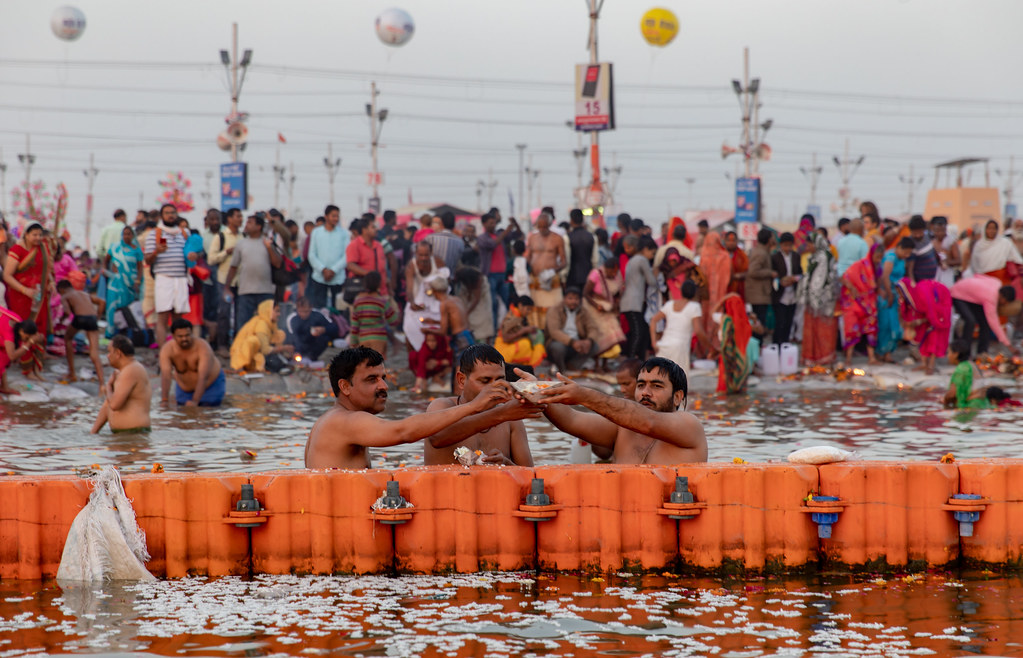
A mela, an Indian fair, is a large gathering of people who temporarily come together at a culturally appropriate time and place. It provides a wonderfully appropriate setting for a variety of Indian rituals, performances, craft, commercial, aesthetic, and culinary traditions. For a 90’s kid and their parents, such a fair was an event of great enthusiasm and excitement providing a much-needed break and refreshment from the daily monotonous life. A place to relieve stress and enjoy family time to the fullest.
Besides being a happy place and stress buster mostly for middle-class families; in the last two decades, these fairs have gained significant historical, cultural, economic, and political value making them an integral part of the Indian society. Initially, going by the name of hattas (small markets), such gatherings began around the 9th – 10th century at the intersections of trade routes, riverbanks, and confluences. These were held at pre-decided times of the year for a given period. It was a place for locals to exchange and sell their produce with the neighbouring regions and villages, alongside being a mode of celebration. Gradually, these marketplaces evolved from just selling agricultural produce to being a source of promoting regional craft, folk, and cultural practices. They were a crucial element in helping the various regions across India to become self-sufficient.
Such gatherings were further encouraged by being associated with deeds of God, Goddesses, a local hero or being coincided with seasonal change, completion of a harvest season, etc. The time of the fair was set by the movement of sun, moon, planets, and stars in accord with solar or lunar calendars. Their cultural and local economic significance can also be judged by various attempts of British government to deem them as breeding grounds of contagious diseases and epidemics like cholera. National level fairs like Kumbh mela were especially targeted as it allowed an easy exchange of indigenous ideas among pilgrims and travelers from all over the country. Various papers and reports were published to stop or at least regularise such events to minimise the ‘dangers to the health of all’.

After independence, fairs were encouraged by the government to publicise and stimulate the indigenous craft and produce while also reviving local customs and cultural beliefs. Small scale enterprises and businessmen strengthened economically as participants in market stalls during such fairs. Regional fairs such as Shilpa mela (artisan’s fair) in Rajasthan advertised local crafts and artisanal community. Cheap items ranging from clothes and household items to furniture and toys attracted a large crowd of all age groups. Games and swings like Ferris wheel, along with a variety of local cuisine as well as fast food stalls, which were a luxury for children in small towns and cities became a major appeal of these events. There was also the benefit of earning a good livelihood by small scale vendors in the festive season.
Owing to its far reaching influence and acceptance by the common people, the government started to put up stalls displaying the latest schemes and technological developments, expanding awareness among the general populace. Being centers of cultural exchange, these became a critical element of the social fabric of society in taking forward its cultural ethnic legacy. This was the case especially with fairs held in the name of a particular religious event, deity or a local hero like Durga Pooja, Dussehra, Kumbh mela, etc. Some examples of local cultural fairs include Baba Ramdev mela, Lakhibanjara mela, Kaga mata mela in Rajasthan. Over a period of time, specific theme based fairs also began to be organised on a nationwide scale to promote a distinct economic aspect. Instances of such fairs include the Soorajkund mela, held every year in Delhi to promote local crafts and artisans, Trade fair being held every year in November in Delhi. However, many critics are also of the opinion that such theme based sponsored fairs are a staged event in contrast to the diverse cultural authentic fair based on religious or local celebration. The original mela, while being a marketplace for locals, also served the purpose of amusing social gatherings, intensifying community bonds, and passing on the regional customs & beliefs. It was a location unifying all the diverse aspects of civilisation ranging from economic to cultural to entertainment to religion.

However, in the last decade, while national level and theme-based fairs have survived or even prospered, the authentic multi-faceted fairs have been on the path of getting lost in history. Few of the reasons for this phenomenon being cheap to purchase options available, malls being one stop for all items, new technologically advanced sources of entertainment combined with lack of time in fast paced individualistic lifestyles. The tradition of celebrating a certain affair for days as a community is no longer considered a viable or practical option. The hygienic AC fitted interior of shopping malls and cinema halls is preferred over open tent melas in large muddy grounds. Furthermore, the practice of passing on the local legacy through entertaining modes like storytelling, puppet shows, etc. in such fairs had also almost vanished completely, especially due to the homogenising umbrella effect of the culture of a nation disregarding the local regional diversity.
Moreover, the recent corona pandemic and the related precautionary rules of social distancing might be the last nail in the coffin of the life of traditional Indian melas. The crowded stalls of cheap clothes, toys, and spicy street food, playful shouts of children ringing in the ears around swings, housewives bargaining for furniture & household items, long lost friends, relatives greeting each other in the festive mood, might just become a thing of the past. While national level large scale fairs could survive with mass ideological and state support, original local mela would become another nostalgic memory for the generation of 90’s kids.
The writer had just finished her M.A. in History from Delhi University and preparing for further studies. Exploring culture, society and learning about the various facets of humanity has intrigued her since childhood and thus she aspires to contribute her bit in making the world a better place.


